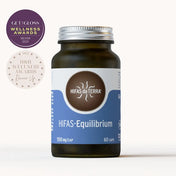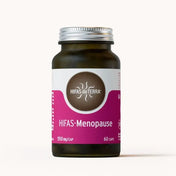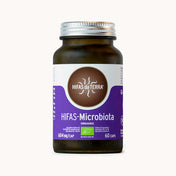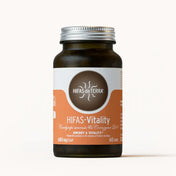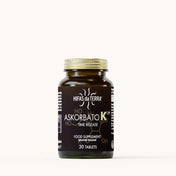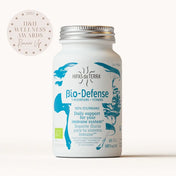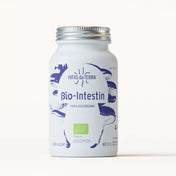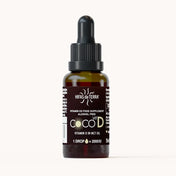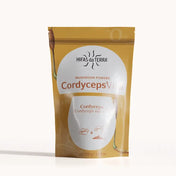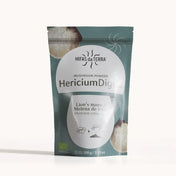TABLE OF CONTENTS
What are theklies?
Perhaps The term Terpenes Is unfamiliar, but what about lycopene? This is a Specific Type of Terpene that Most People Have Heard of, which is present in Tomatoes and Watermelons, for Example. What defines are Phytochemical Compounds? One of the Most Characteristic Features of Terpenes Is Their Antioxidant Value But they are responsible for the aroma and colour of fruits, vegetables and mushrooms. In high concentrations, we can talk about the Pharmacological Properties Of Terpenes, and they are offed therapeutically. For Example, Som Natural Terpene Derivis Such As Menthol or Eucalyptus are used for the Symptomatic Treatment of Cough.

The Omniprence of Terpenes in the Vegetable Kingdom and Their High Antioxidant Value is One of the Reasons Why It is recommended to Varied, multi-coloured diet rich in these foods is recommended to help to combat cellular oxidation, whereher Inadequate diet. The Who Dietary Guidelines, Recommending The Daily Consumption of 400 g of fruits and vegetables is not solely for their antioxidant content. In Adionion, They State That A Diet Rich in Terpenes is reverse is the correlated with the Risk of Suffering from Chronic Deseodas in General As Well As Cancer.
The Properties of Reishi Terpenes
Terpenes, combined with (beta-glucan) Polysaccharides, are the Bioactive Compounds that make Reishi (Ganoderma lucidum), The King of the Fungus Kingdom and One of the Most Concentrated Naturally Antioxidant Substances That Exist. Reishi Contains a Bush A High Concentration and Large Variety of Terpenes, Many of Which Are Considers Unique. These include the Ganoderic Acids, Lucidic Acid, and Ganoderol.

The G. lucidum Variety of Reishi Terpenoid Compounds Contain Immunomodulatory, anti-inflammatory, hypolycamic, lipid-lowering and hepatoprotive PROPERTIES AS DETAED BELOW:
- Terpenes are Capable of Inhibiting the Release of Proinflammatory Substances; anti-inflammatory activity is mediated by the inhibition of NF-Kappaβ and Signalling Pathways Such as AP-1.
- They have Cytoprotective Effects Preventing hepatotoxicity due to antioxidant enzymes.
- They possess Antiproliferative Effects by Inducing DNA Damage, Cell Cycle Arrest in G1 Or apoptosis in Damaged Cells.
- They Normal Protect Cells from The Damage Induced by Radiation.
WHY IS THE Action of Terpenes On Cancer Studied?
Terpenes are toxic to desired or malformed cells. In Other Words, Cytotoxic To Cancer Cells.
What’s The Mechanism? They impede The Growth and Development of Cancerous Cells by Reprogramming Their Dna To Activate The Mechanism that Causes Cell Death (apoptosis). Somo Reishi Terpenes Have Been Shown To have Cytotoxic Effect on Leukaemia, Lung, Colon, Cervical, Breast and Sarcoma Cancers.

Behave Like Terpenes Cytostatic substances, Which are Capable of Inhibiting the Development of Tumour Cells. The Cytostatic Effect of Sum Reishi Terpenes You have been evidenced in Different Phases of Cervical Carcinoma, Breast Cancer and Lung Cancer.
As explained, Terpenes induces apoptosis. The Proapoptotic Capacity of Reishi Terpenes You have observed in Lymphomas, Cervical and Pulmonary Carcinomas and Melanomas.
Although The Majority of Research Thus Far On The Action Of Terpenes you have Been Undertaken in the preclinical phase, and ophtan combined with other treatments, Published Studies considered the data collected is useful for clinical use at a preventive level, specially in hormone-dependant oncological process.

Sub Publications Suggest That The Provenance, The Cultivation System and the Extraction Methods used in G. lucidum PRODUCTION MAY AFFECT THE COMPOSITIONAL PROFILE OF THE FINISH REISHI PRODUCT BOY AT A QUALITATIVE AND QUANTITATIVE LEVEL. Therefore, The Complex and Concentration of Ergosterol and Lucidumol B are Considering by Authors As at the Criterion of Quality in the Biochemical Profile of This Medicinal Fungus.
Other bioactive compounds of reishi
Many of the anti-inflammatory, Antiallergic and Hypoglycamic Properties of Reishi Are Due in part to the witness of other compounds, Mainly Polysaccharides, But also Due to Phenols and Glycoproteins. The Most Important of Which Are:
POLYSACCHARIDES (ALPHA, BETA AND D-GLUCANS)
In vivo and In vitro Studies Demonstrate The Immunomodulatory, Antitumor, Hypolycamic and Antioxidant Activity of Beta-Glucans, A Type of Polysaccharide Present in Reishi.
Alpha-Linolenic Acid C18: 3n6 (from the Omega-3 series)
According to the Heart Foundation, The Incorporation of Omega-3 Fatty Acids into the diet Supports Normal Cardiovascular Health and reduces the Risk of Cardiovascular Disease. It is common Knowledge that Omega Fatty Acids Are Found In Seeds, Nuts, Fish, and Seafood. However, It’s Less Well Known That Certain Mushrooms Are Also A Source. Sub of the more important properties of essential Fatty Acids include its anti-agregant, Vasodilatary, Hypotensive and antithombotic actions.
Biological Function of Terpenes
We have present the efforts of terpnes on Human Health, but no les important are their biological function in the living organisms they are sourced from. In plants, for Example, they contribute to photosynthesis and protection agaless solar radiation. In Adionion, They constitute Natural Barrier Against Insects and High Temperatures. Therefore, The Protective Functions of Terpenes are fundamental for Human Life and for the Preservation of Nature As We Know It.
References
- Brijesh Kumar Singh, Madhulika tripathi, Bhushan P. Chaudhari, Pramin K. Pandey, Poonam Kakkar (2012) Natural Trips Prevent Mithochondrial Dysfunction, Oxidative Stress and Release of apoptotic During Nimesulide-Hepatotoxicity in Rats. Plos One.
- Cano-Flores, Arturo (2013) Biotransformation of triterpenes with different microorganisms. Mexican Magazine of Pharmaceutical Sciences, 44 (2), 7-16.
- Dudhgaonkar S. et al. (2009) SUPPRESSION OF THE INFLAMMATARY RESPONSIBLE BY TRITIPES ISOLATED FROM THE MUSHROOM GANODERMA LUCIDUM. Int immunopharmacol., 9 (11), 1272-80.
- El-Mekkawy S, Meselhy Mr, Nakamura N, Tezuka and, Hattori M, Kakiuchi N, Shimotohno K, Kawahata T, Otake T (1998) Anti-HIV-1 and Anti-HIV-1-Protease Substances from Ganoderma lucidum. Phytochemistry. Nov; 49 (6): 1651-7.
- Irene Roceros Ramos. Nutritional and healthy properties of fungi. Technology Center for Mushroom Research of La Rioja.
- J.graßmann (2005) Terpenoids as plant antioxidants. Vitamins & Hormones
- Li B. et al. (2013) Protective Effect of Ganodermanondiol Isolated from the lingzhi Mushroom Against Tert-Butyl Hydroperoxide-Induced Hepatotoxicity Through NRF2-MEDIATED ANTIOXIDANT ENZYMES. 53, 317-24.
- Li P. et al. (2013) Triterpenoids from Ganoderma lucidum and their cytotoxic activities. Nat Prod., 27 (1), 17-22.
- Mariana Verga, Lygia Salgueiro (2017) Potentialities Medicine of Ganoderma lucidum. Phytotherapy Magazine, 17 (2), 145-163.
- Matus, María Francisca, Jorquera-Román, Manuel, & Zúñiga-Hernández, Jessica (2017) Anti-Proliferative Effect of Terpenes On Human Prostate Cancer Cells: Natural Sources and Their Potential Role As Chemopreventive Agents. Chilean Nutrition Magazine, 44 (4), 371-382.
- Moreno P, Henry, Martínez M, Alejandro, & Fujimoto, Yoshinori (2011) Isolation and identification of two sterols and a triterpenoid of the fruitful body of Ganoderma lucidum cultivated in Colombia. Vitae, 18 (1), 11-15.
- Pandey Govind (2011). Vegetable antioxidant Act Against Cancer and Other Devinases. International Journal of Pharmaceutical Studies and Research.
- Russell M. Paterson (2006) Ganoderma - A Therapeutic Fungal Biofactory.phytochemistry 67 1985–2001.
- Reyna María Cruz Bojórquez, Javier González Gallego and Pilar Sánchez Collado (2013) functional properties and health benefits of the lycopene. Nutr. Hosp. Vol.28 No.1 Madrid Jan./FEB.
- Ríos-Cañavate J.L. (2008) Ganoderma lucidum, a fungus with immunostimulant properties. Phytotherapy Magazine, 8 (2), 135-146.
- Wheat, Ángel, & Suárez Medellín, Jorge (2011) Biological Active Metabolites of the Genus Ganoderma: Three Decades of Myco-Chemistry Research. Mexican Mechan of Mycology, 34, 63-83.
- Urango Marchena la, Montoya Parra Ga, Cuadros Quiroz Ma, Henao DC, Zapata Pa, López Mira L, et al. (2009) Effect of bioactive compounds of some health foods. Perspect Nut Human.11: 27-38.
- Website of the Spanish Heart Foundation: www.fundacionelcorazon.com.
- WHO website
Increase the consumption of fruits and vegetables to reduce the risk of noncommunicable diseases. - Wu GS. et al. (2012) Ganoderic Acid DM, A Natural Triterpenoid, Induces Dna Damage, G1 Cell Cycle Arrest and apoptosis in Human Breast Cancer Cells. Phytotherapy, 83 (2), 408-14.
- Yang H, Dou QP (2010) Targeting apoptosis pathway with natural Terpenoids: implications for treatment of breast and prostate cancer. Curr Drug Targets. 2010; 11 (6): 733-44.
- Yang H, Dou QP (2010) Targeting apoptosis pathway with natural Terpenoids: implications for treatment of breast and prostate cancer. Curr Drug Targets. Jun; 11 (6): 733-44.

